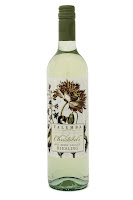The FLWA made it pretty easy on me - I was one of nearly two dozen media representatives supplied with samples. Hundreds of other folks participated with wines which they bought with their own hard-earned money - money well spent.
New York’s Finger Lakes are a collection of long, deep, narrow lakes that were clawed out of the earth by glaciers. Those lakes now provide the moderating influence needed to balance the cold winters in upstate New York for the growing of grapes.
Established as an AVA in 1982, the Finger Lakes region really got started in the 1950s, when Dr. Konstantin Frank set out to prove the skeptics wrong. He figured it couldn’t be any harder to grow European vinifera grapes in New York than it was in the Ukraine. His perseverance paved the way for all the other Finger Lakes growers to follow in his successful footsteps.
Best known for their distinctive and delightful Riesling wines, the winemakers of the Finger Lakes region also like to grow and make Gewürztraminer, Pinot Gris, Pinot Noir, Cabernet Franc and Merlot - in addition to native and French hybrid varieties.
Wagner Vineyards Reserve Pinot Noir 2010
The folks at Wagner say they only produce this wine in top growing seasons, and they say 2010 was one of those seasons. A lot of folks say that around the Finger Lakes, in fact. Some say the 2010 vintage was God’s way of making up for the 2009 vintage.
The grapes for this Pinot Noir are grown in a single vineyard overlooking Seneca Lake from the eastern shore. On Twitter, Katie Roller - @PR4Wagner - told me that “most of the wineries in the Finger Lakes region are so small that all their wines are single vineyard.”
Wagner was founded in 1979, and is one of the older wineries in the region. There is no residual sugar in this wine, and the alcohol hits 12.8% abv. Winemaker Ann Raffetto ages it in French and American oak for a year.
This is a spicy little number. Notes of cinnamon, allspice, pepper, and anise join the raspberry aromas and flavors. Hints of tea come forth on the palate, along with a ripping acidity. It would no doubt leave a fairly delicate remembrance if it were not for its incredibly zippy freshness.
Thirsty Owl Wine Company Dry Riesling 2012
The grapes for this varietal wine come mostly from newer estate vineyards on the western shore of Cayuga Lake, but there is fruit from some 30-year-old vines as well. The tech numbers show alcohol at 11.2% abv and residual sugar at 0.4% - so it’s very dry. Shawn Kime is the winemaker and vineyard manager for Thirsty Owl.
The wine is very pale in the glass and its nose smells of pears and tart apples. In the mouth, it’s an austere Riesling, with green apple and a citrus zing on the palate and a freshness that’s bracing. The clean, angular feel is steely and nervy.
On Twitter, @wild4wawine noticed a nice note of apple cinnamon that appeared on the finish. The winery’s twitter feed - @TheThirstyOwl - told me, “This was bottled not too long ago. I expect the fruit to come up more over the next few months.”
Standing Stone Vineyards Gewürztraminer 2010
Minerality is expected here, since the Standing Stone vineyards are planted shallow over a solid bed of slate on the eastern side of Seneca lake. This Gewürz has only 1.0% residual sugar and 13.3% abv.
The huge, expressive nose trumpets not minerals but honeysuckle, jasmine, fresh peaches, pears and oranges. Those notes repeat on the palate, which is abetted by some of that great Finger Lakes acidity. The finish leaves a trace of tropical fruit behind.
Lakewood Vineyards Chardonnay 2011
Established in 1988, some of the Lakewood vines actually date back to 1952. Winemaker Chris Stamp uses a mixture of American, French, Hungarian and 65% New York oak in the aging program for this Chardonnay, while the alcohol clocks in at 13.4% abv and there is no residual sugar. It retails for $13.
The wine is undeniably oaky, with spiciness crawling all over it. In addition to a creamy texture in the mouth, there is a racy acidity that doesn’t give up until well past the finish. This is not a Chardonnay that just lets itself be sipped away. This is a Chardonnay that takes umbrage it’s not paired with brisket and slaps the taste buds silly.
One Twitter user who seemed to wander into the Finger Lakes fray unaware - @maria_fulmer - commented, “Not a big wine drinker, but I am apparently missing out on this #FLXWine.” That’s right, Maria. If you are not already on the Finger Lakes bandwagon, it’s never too late to jump on. There are plenty of hands to help you climb aboard. Start with @FLXWine.








